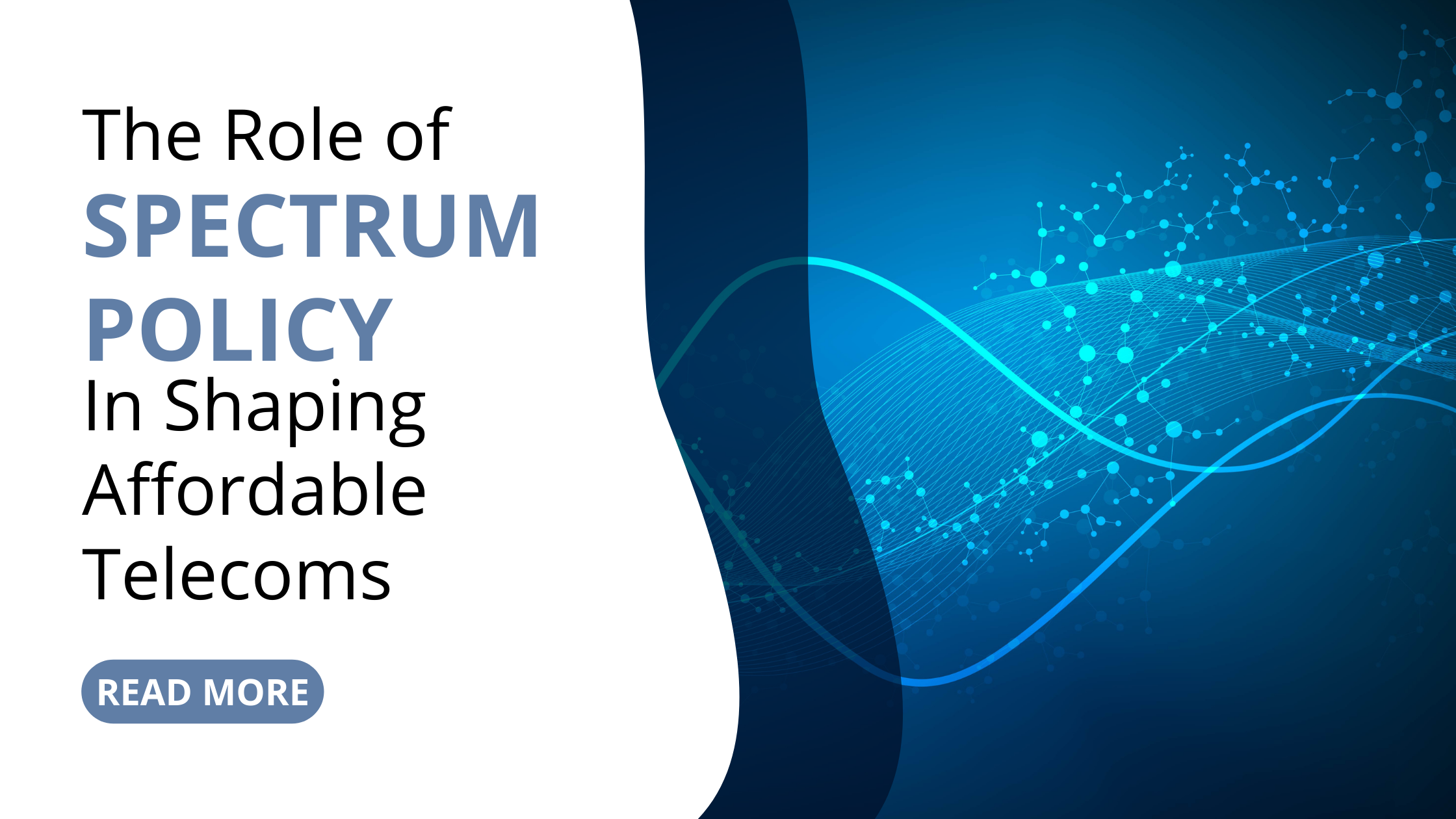In Africa, telecommunications infrastructure has emerged as a critical driver of economic growth, social development, and innovation. However, the high cost of connectivity remains a significant barrier to achieving universal access, especially in rural and underserved areas. It is evident that the digital age has ushered in a wave of transformation, where internet connectivity is no longer a luxury but a necessity. Yet, for millions of Africans, the promise of digital inclusion remains out of reach. In this blog post, we’ll look into the factors influencing the cost of connectivity, the crucial role of spectrum policy, and the strategies that can pave the way for affordable telecoms across the continent.
Understanding the Cost of Connectivity
The cost of connectivity encompasses various elements, including mobile data plans, voice services, and broadband subscriptions. Several factors contribute to the pricing of these services:
- Infrastructure Costs: Building and maintaining telecom infrastructure, such as cell towers, fibre-optic cables, and data centres, require substantial investments. These costs are often passed on to consumers through service fees.
- Spectrum Licensing Fees: Governments allocate radio spectrum—the invisible airwaves that carry wireless signals—to telecom operators through licensing processes. The cost of acquiring and renewing these licences can be high, impacting service prices.
- Taxes and Levies: Governments impose various taxes and levies on telecom services, which can significantly increase the cost for consumers.
- Operational Costs: Running a telecom network involves expenses related to staff salaries, marketing, customer service, and network maintenance. These costs are factored into service pricing.
- Competition: The level of competition in the telecom market can influence prices. In markets with limited competition, operators may have more flexibility to set higher prices.
The Role of Spectrum Policy in Shaping Affordability
Spectrum policy plays a pivotal role in determining the cost of connectivity. Governments hold the keys to the radio spectrum, a finite and valuable resource essential for wireless communication. How governments allocate and licence this spectrum can have a profound impact on the affordability and availability of telecom services.
- Spectrum Auctions vs. Administrative Allocation: Governments can choose to auction spectrum licences to the highest bidder or allocate them through administrative processes. Auctions can generate substantial revenue for governments but can also lead to higher spectrum costs for operators, which may be passed on to consumers.
- Spectrum Sharing: Spectrum sharing allows multiple operators to use the same frequency band, potentially increasing spectrum efficiency and reducing costs. However, implementing spectrum sharing requires careful coordination and technical expertise.
- Spectrum Caps: Some countries impose limits on the amount of spectrum an individual operator can hold. This is intended to promote competition and prevent any single operator from dominating the market.
- Spectrum for Rural Connectivity: Governments can allocate specific spectrum bands for rural connectivity initiatives, encouraging operators to expand their networks into underserved areas.
The Road to Affordable Telecoms: Strategies and Solutions
According to a GSMA article: “A spectrum roadmap is essential to ensure there is enough spectrum to meet surging demand for mobile services in the long- and short-term.” [1] Achieving affordable telecoms in Africa requires a multifaceted approach:
- Infrastructure Sharing: Encouraging infrastructure sharing among operators can reduce capital expenditures and operational costs, leading to lower prices for consumers.
- Universal Service Funds: Governments can establish Universal Service Funds to subsidise the expansion of telecom networks in rural and underserved areas.
- Tax Reforms: Reducing or restructuring taxes on telecom services can make them more affordable for the general population.
- Regulatory Reforms: Streamlining licensing processes and promoting competition can attract new investments and drive down prices.
- Technology Neutrality: Promoting technology-neutral policies can encourage the deployment of innovative and cost-effective solutions, such as Open RAN (Radio Access Network).
- Community Networks: Supporting the development of community-owned and operated networks can provide affordable connectivity in remote areas.
- Affordable Devices: Promoting the availability of affordable smartphones and tablets can empower more people to access the internet and digital services.
The future of affordable telecoms in Africa is promising. With the right policies, investments, and collaborations, the continent can overcome the barriers to connectivity and unlock the full potential of the digital economy. The widespread adoption of mobile technology, the expansion of 4G and 5G networks, and the emergence of innovative business models are all contributing to a more accessible and affordable telecoms landscape.
Conclusion
The pursuit of affordable telecoms in Africa is a complex challenge but also an opportunity for innovation and progress. By addressing the underlying cost drivers, implementing sound spectrum policies, and embracing innovative solutions, we can bridge the digital divide and empower millions of Africans to participate fully in the digital age. The future of connectivity in Africa is bright, and with continued effort and collaboration, we can make affordable telecoms a reality for all.
[1] https://www.gsma.com/connectivity-for-good/spectrum/gsma_resources/spectrum-pricing-and-licensing-in-africa-driving-mobile-broadband/









